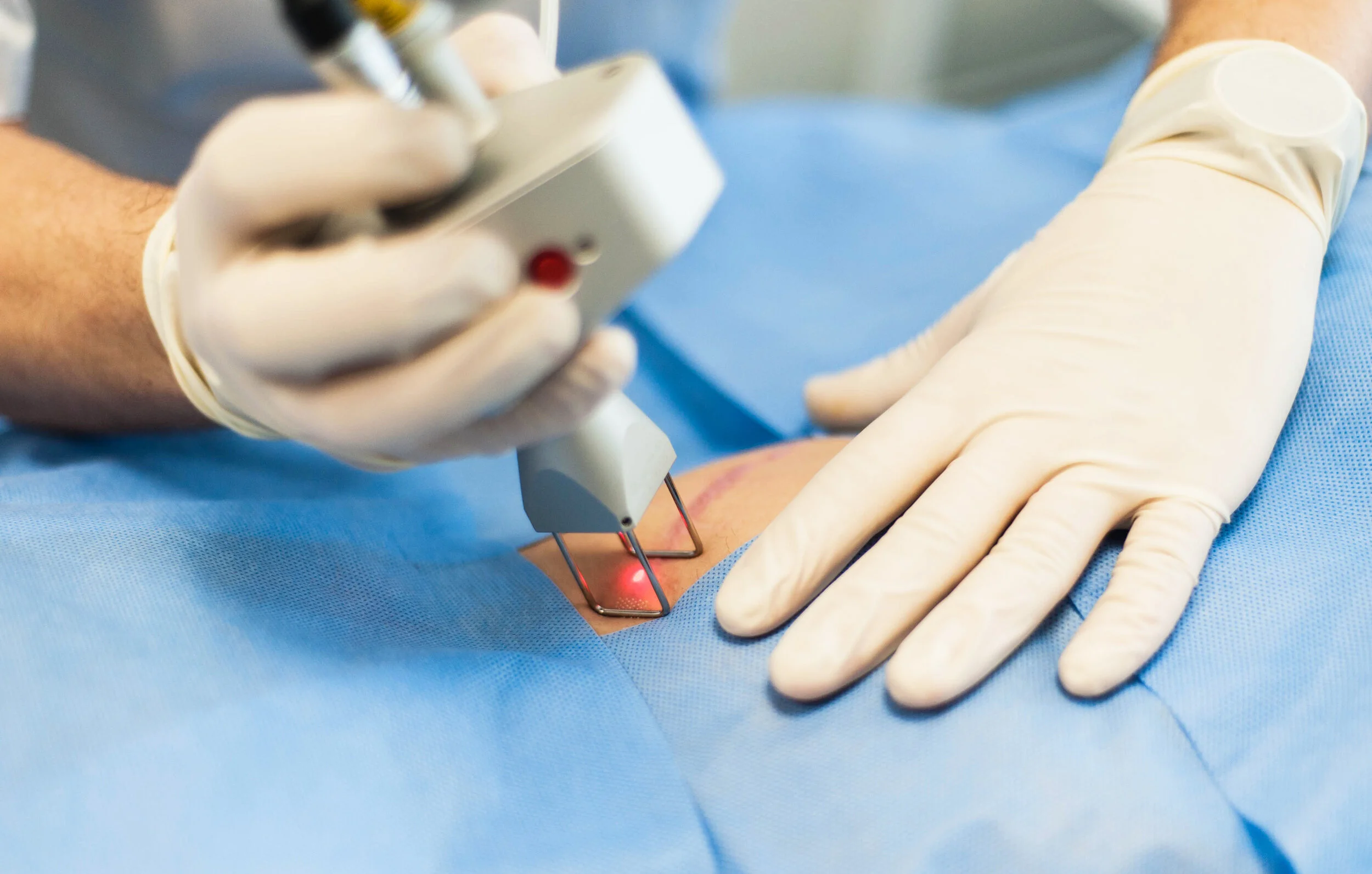The treatment of injuries and the subsequent scars depends on many factors. Healing is a process that continues for months to years and can be modified at any point during that time. Initially, the goal of healing with minimal inflammation and monitoring of the process promotes healing with the best possible result. All deep injuries of the skin result in some form of scar, as this is the natural process. Healing that proceeds with inflammation, with no intervention or because of the natural biology of the individual healing process, may result in scars that are determined to be unsatisfactory either as a result of misalignment, hypertrophic scar formation, or keloid formation.
Within the first six months following an injury, abnormal scar formation can be ameliorated through the use of silicone sheets, pressure garments, triamcinolone injections, massage or even daily applications of paper tape. It is always preferable to treat scars during the initial healing phase, to maximize the likelihood of a satisfactory result. These techniques can also be applied to mature scars up to many years later. In the case of keloids and hypertrophic scars, reduction in bulk, flattening, softening, is still possible with intervention. The most common approach is the use of topical silicone sheets and steroid (triamcinolone) injections. These applications are generally continued for several months until either the scar is improved or there is a failure to see improvement. At that point, surgical intervention may be offered, which would further improve the appearance of the scars if they are indeed hypertrophic, rather than keloid.
This procedure--excision of the scar tissue, and re-suturing of the wound--would then be followed by a course of scar management including regular evaluations, possible injections of steroids and topical treatments. Surgery can be done under either local or general anesthesia.
If the scar is hypertrophic but not a keloid, any of these interventions, surgical or non-surgical, are highly likely to be effective. If the scar is a keloid, then the probability of treatment success varies from 30-60%, with a significant risk of recurrence and a smaller, but significant, risk of worsening. Distinguishing between keloid and hypertrophic scars requires both a physical assessment and confirmation with histology if surgical intervention is required.
Scar treatment medical expert witness specialties include plastic surgery, pediatric plastic surgery , and dermatology.

